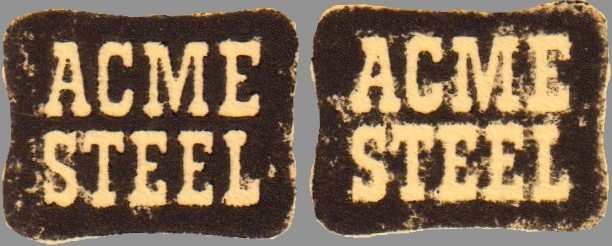Little kids dream about being a shortstop for their favorite baseball team. They hang a pennant on their wall and get a cap and they cheer on their favorite players. As life goes on, those childhood dreams are forgotten or pushed aside for more critical needs. Then as those critical needs are satisfied, even adults have a moment to dream. I have spent over 25 hours roaming around Acme and I’ve spent an untold number of hours learning more about the different positions in the plant and their responsibilities. For 20 years before that, I was driving down to just ride my bike and hang out in the area. We all need fantasies, where we can feel like all our problems would go away if only we could live where we want to live and work where we want to work. The unpleasant truth is that more likely then new problems and even more critical needs would present themselves. And anyway, my time machine has no fuel.
What would a person make at Acme Steel’s coke plant when it was operational? What does a larryman earn? How much could you bring home as a lidman, or the heater down in the battery basement checking the flues? Well let’s take a look and find out.
I was fairly excited to find the union agreement from 1987. But I didn’t think much of it besides the couple photos I took and I did a ‘catch and release’ and left it to rot at the plant. Until I got home and took a closer look at the table of contents and saw the section marked ‘wages’. Now this interested me. But I’d have to wait until I could get back to the plant and hope that my lot had not been disturbed. Luckily, it was intact.
The wage chart is at the top of this post. These 34 job classes cover the entire steel industry, not just Acme and not even just coke plants. As it turns out, there was likely no one at Acme who was beyond even a class 20. Those are likely reserved for other industry jobs of extreme danger and responsibility.
But once I got to view this rate chart, I was eager to do the inflation calculations. But how would that correspond to the job functions that I knew something about? I had no idea, because the union agreement this was taken from does not clarify individual job positions. It only states:
“The parties have instituted a job description and classification program based on the most recent Job Description and Classification Manual…”
It took some research but I found some answers. The agreement goes onto state (if I am interpreting correctly) that as of it’s writing in 1986, the job classifications from 1972 were still in effect. It seems that perhaps this Manual is not updated on an annual or even a regular basis.
This is backed up by the fact that I could not find many different versions of it – but I did find them!

I could only find 1953 and 1963. Perhaps it was revised every 10 years? So for our purposes, we will have to go with 1963. If there was some changes made to classifications by 1986, I have to assume it was not anything monumental as many of these jobs at the coke plant had not changed much in that time.
Before we get to the wages, I found some other interesting info in this manual. There are indepth descriptions of these positions all over the steel industry, clearly defining their responsibilities and required skill levels. Interesting that in 1963, they were still using the 1946 definitions for these positions which helps to explain why in 1986 they were using the manual from 1972. I concentrated on the ovens positions since I have a better understanding of those jobs.
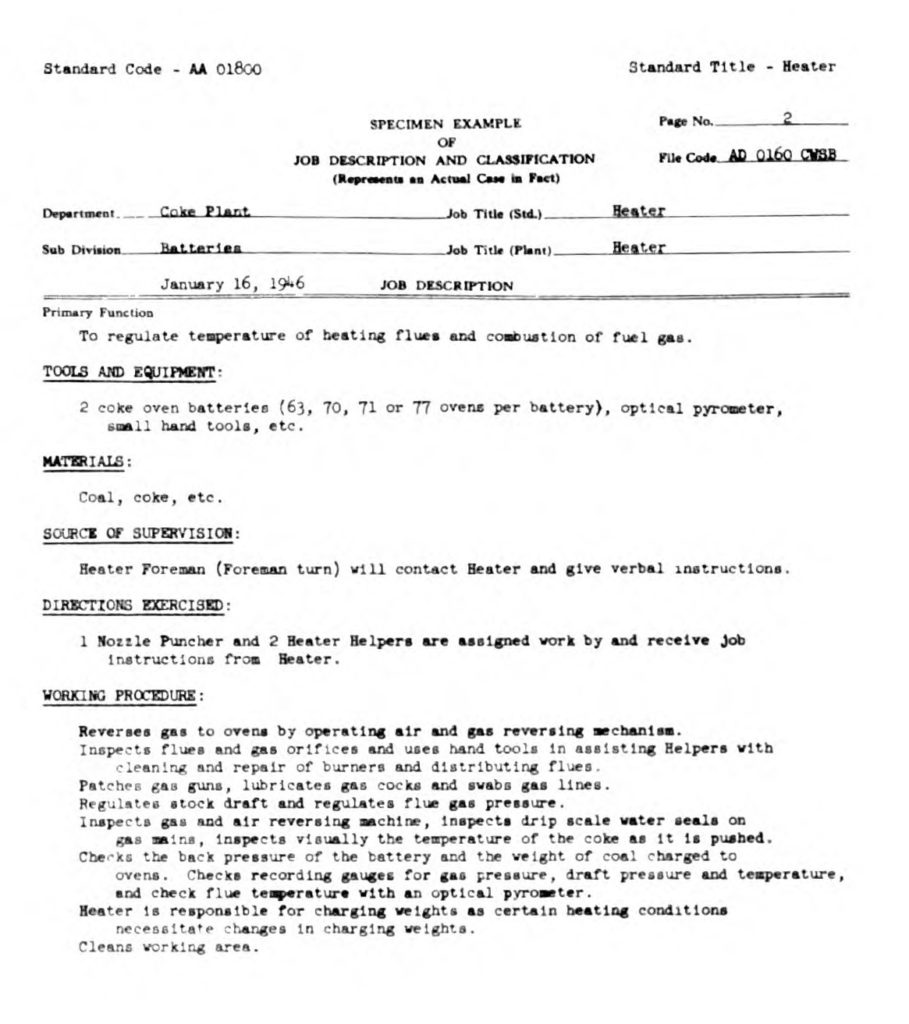
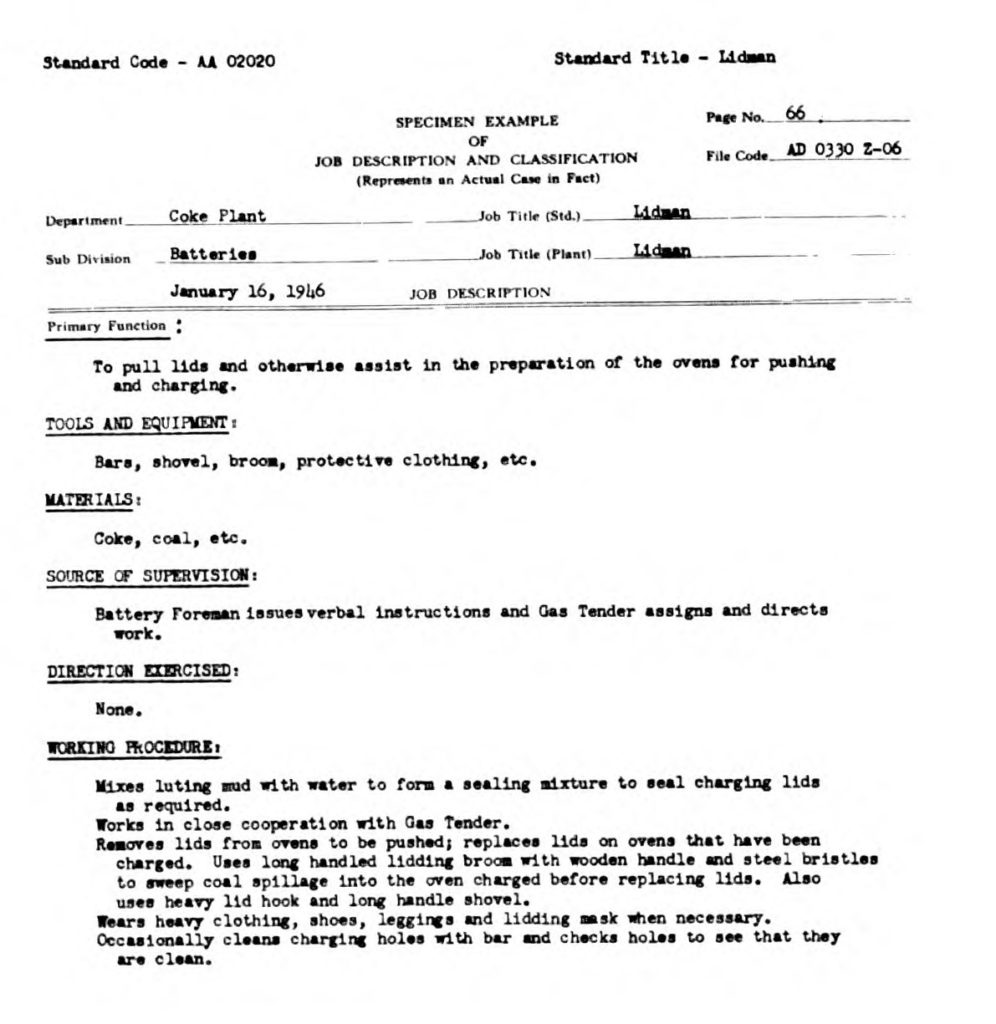

Before we go any further, I should mention that I asked Doug about this not long ago. His answer is below – let’s see if this checks out.
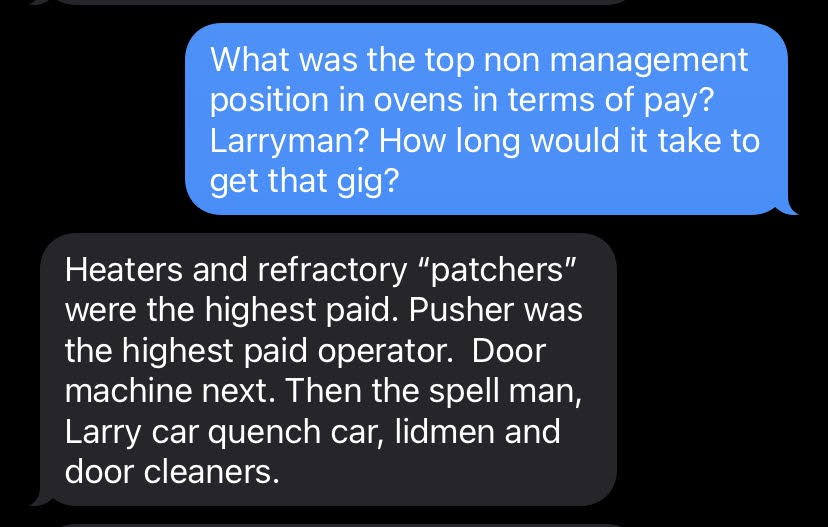
And now onto the paychecks! I added the ‘1963’ notation to upper right just to be clear if anyone comes across this. I will focus only on the positions that existed at the time that the plant closed and I am familiar with.
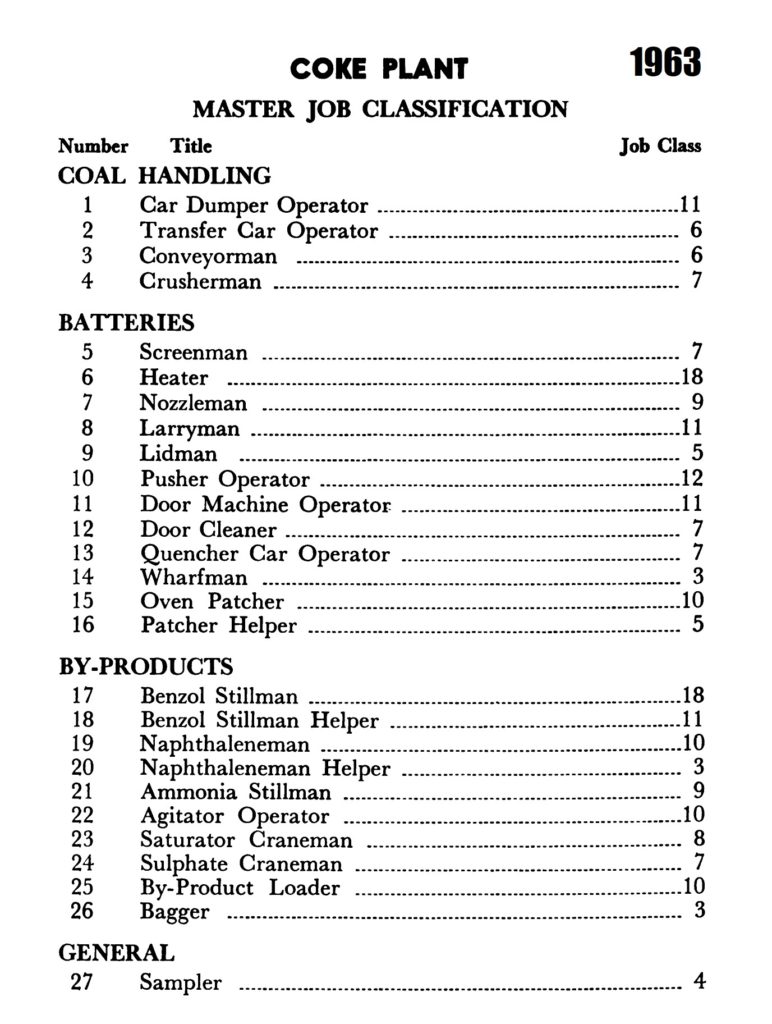
[UPDATE: on 5/14/21 I located another union agreement at the plant, this one from 1993. It has an updated wage table and also includes wages that will take effect in 1995. I have added them to the outline below and again used an online inflation calculator to convert to current wages. This is very interesting but may be more represenative of the economy at that time, or the steel industry at the time, rather than conditions at Acme or a degradation in the relationship between the union and Acme. All I know is that I have been at my job for 15 years, I am 44 years old and even the lowest job class here makes more money than I do!]
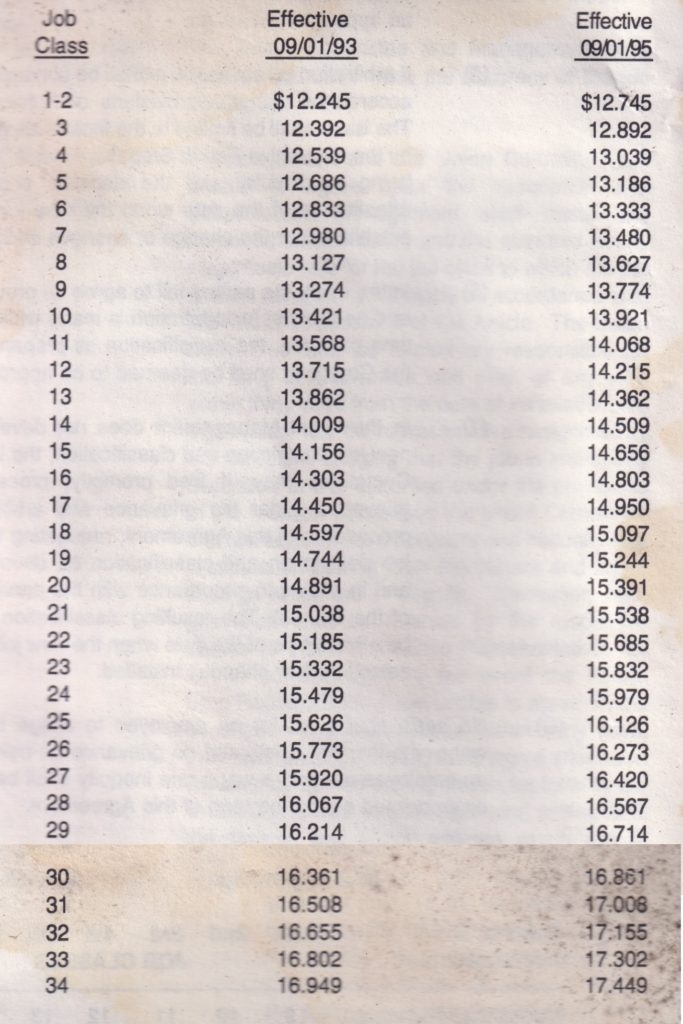
- Lidman – class 5
- $11.19/hr (1986)
- $26.42/hr (2020)
- $12.69/hr (1993)
- $23.45/hr (2021)
- $13.19/hr (1995)
- $23.11/hr (2021)
- $11.19/hr (1986)
- Door cleaner/Quench car – class 7
- $11.48/hr (1986)
- $27.11/hr (2020)
- $12.98/hr (1993)
- $23.99/hr (2021)
- $13.48/hr (1995)
- $23.62/hr (2021)
- $11.48/hr (1986)
- Larryman/Door machine – class 11
- $12.07/hr (1986)
- $28.50/hr (2020)
- $13.57/hr (1993)
- $25.08/hr (2021)
- $14.07/hr (1995)
- $24.66/hr (2021)
- $12.07/hr (1986)
- Pusher – class 12
- $12.22/hr (1986)
- $28.86/hr (2020)
- $13.72/hr (1993)
- $25.36/hr (2021)
- $14.22/hr (1995)
- $24.92/hr (2021)
- $12.22/hr (1986)
- Heater – class 18
- $13.10/hr (1986)
- $30.93/hr (2020)
- $14.60/hr (1993)
- $26.98/hr (2021)
- $15.10/hr (1995)
- $26.46/hr (2021)
- $13.10/hr (1986)
Not suprising Doug was dead on! Not bad for a guy that hasn’t been in the plant for 20 years and was a salaried manager who didn’t set hourly pay! Turns out Acme would have been a hell of a good place to work. The weather would have been brutal at times, and I sure wouldn’t want to work the overnight shift. Of course if you did, the 3pm-11pm shift made a 71 cent increase and 11pm-7am made $1.06 extra (2020 prices). Not bad at all!
[Note: on 3/6/21 I found my Rosetta Stone. Titled “Chicago Plant Senority Unit Sequences”, it lists job classes for all positions at the coke and furnace plants. Turns out that job classes hadn’t changed between 1963 and 1994, except for Lidman which I show now at class 7].

